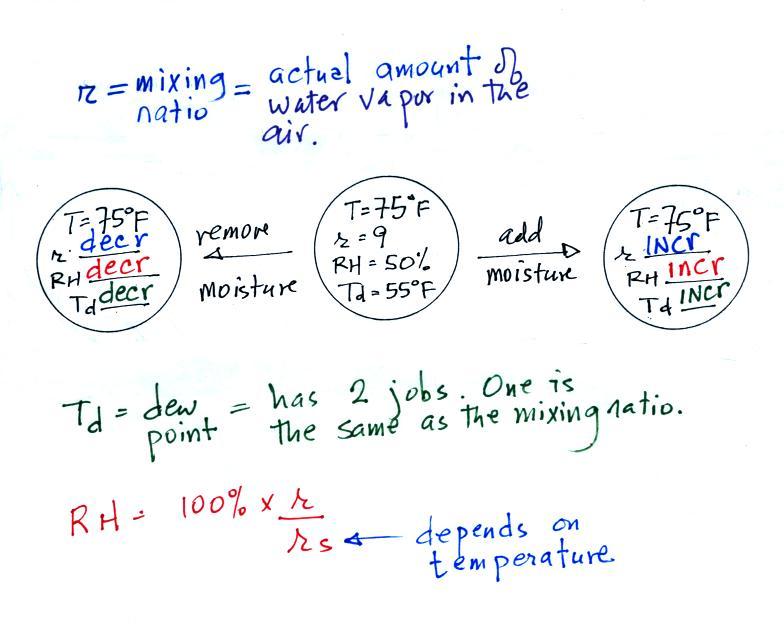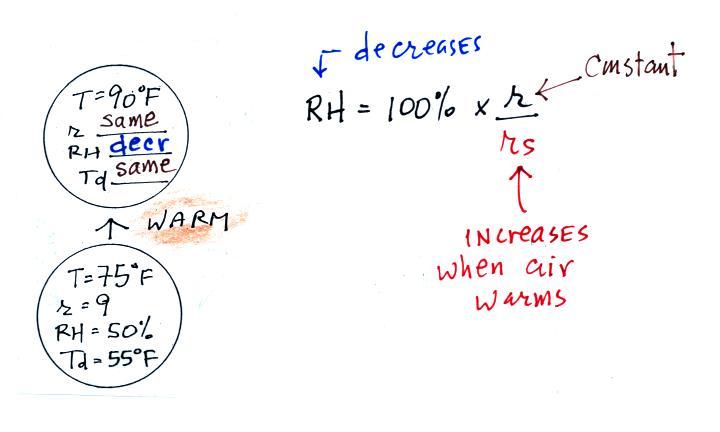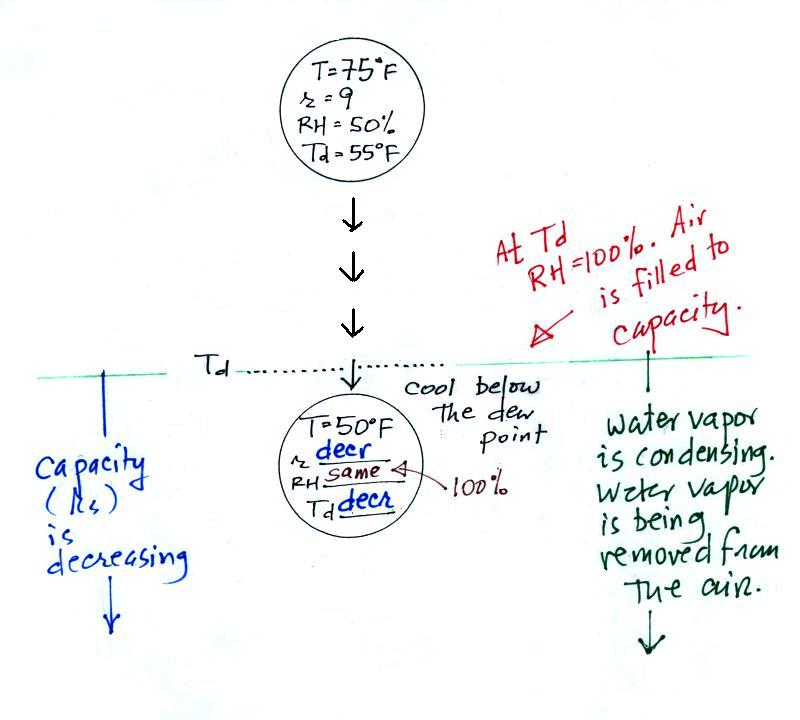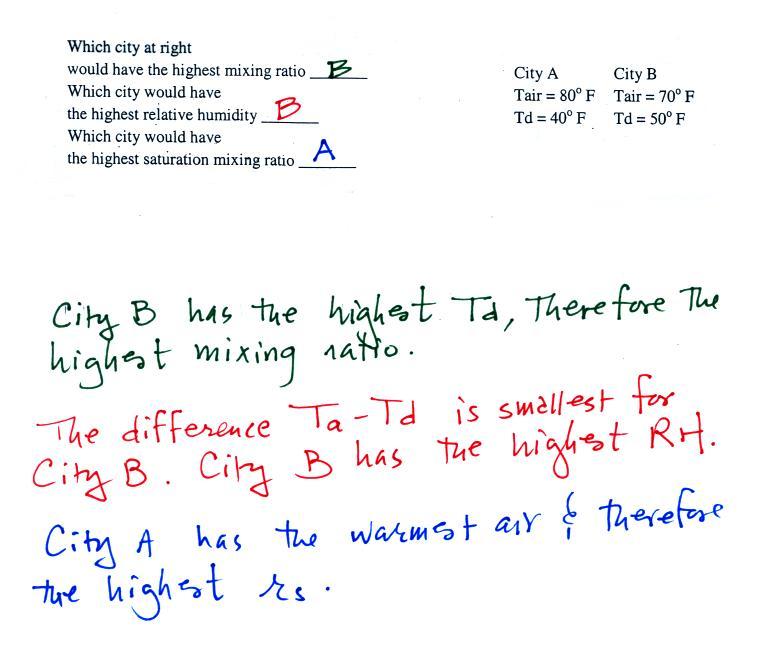Here, in a painful piece by piece kind of way, are answers to
the questions on the challenging assignment.
Here is, I think, the easiest part
of the 1st question. What will happen to the values of the mixing
ratio, r, the relative humidity, RH, and the dew point
temperature, Td, if you add moisture to or remove moisture
from a parcel of air?
The job of the mixing ratio is to tell you how much water vapor is
actually in the air. One of the jobs of the dew point is to do
the same thing. So both of these variables will increase when you
add moisture to the air and decrease when moisture is removed from the
air.
The value of the relative humidity depends on both the mixing ratio, r,
and
the
saturation
mixing
ratio
rs. The saturation
mixing ratio depends on air temperature (warm air can potentially hold
more water vapor than colder air). But in this part of the
question temperature is remaining constant, so the value of rs
won't
change.
RH
will
change
in
the same way as r and
Td.
In this part of the problem we warm
the air but don't add or remove any moisture. Since moisture
isn't being added or removed the mixing ratio and the dew point
temperature will remain constant.
The relative humidity depends on r (which stays constant) and rs
(which
will
change
because
the
air
is warming). The value of rs
will
increase as the air is warmed. Since it is in the denominator of
the RH equation, the RH will decrease.
This is just the opposite
situation. We're cooling air but not adding or removing moisture
(as long as you don't cool the air below it's dew point
temperature). The values of r and T d will remain the same.
The RH will increase (eventually reaching 100% when you cool the air to
the dew point). RH decreases because cooling the air decreases
the saturation mixing ratio.
Finally we look at what happens when you cool the air below the
dew point temperature. In a previous lecture we saw that this is
one way of removing moisture from air. It's like wringing
moisture out of a sponge.
The RH reaches 100% when the air
has cooled to the dew point. As you cool air below Td the air's
capacity for water vapor, the saturation mixing ratio, continues to
decrease. The air finds itself with more water vapor than it can
hold. The excess condenses. The mixing ratio and the dew
point temperature will decreases as the air loses water vapor.
The RH will remain at 100%, the highest it can get.
There were two problems on the other side of the page.
Td and r have the same job, telling
you how much water vapor is actually in the air. The city with
the highest dew point temperature will also have the highest mixing
ratio and the highest amount of water vapor in the air.
Saturation mixing ratio depends on temperature. The city
with the warmest air will have the highest rs and could
potentially hold the most water vapor.
Finally the difference between Ta and Td gives you an idea of the
relative humidity. A small difference means high relative
humidity and vice versa (no difference between Ta and Td means RH =
100%.).
The figure below gives the answers to the last question.






